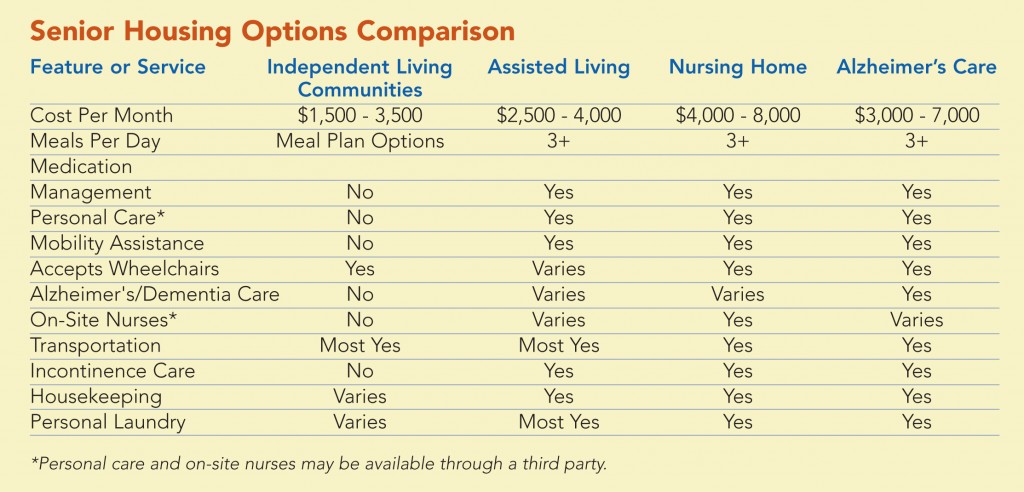Housing the Older Generation (And Us Too, Soon Enough)

By David M. Abromowitz
5 min read
As the Greatest Generation moves through their 80s and 90s, and as millions of Baby Boomers turn 65 each year, suitable, affordable housing options for older Americans become more pressing. But as a recent Joint Center for Housing Studies report demonstrates in statistical depth, those options are far from existing in sufficient numbers and variations.
In the 1940s, my parents shared my grandfather’s house until he died at age 79. While I was growing up in New Jersey in the 1960s, it was normal for my grandmother to be living with us for extended visits. Eventually she gave up her Bronx apartment and became part of our household until dying at age 86.
My family’s experience of multiple generations living in proximity was common. Even if they weren’t all living in the same household, the parents of the current Baby Boomers often lived nearby their parents. This provided a level of informal assisted living for earlier generations.
The whole context of “elderly” has changed dramatically over the past century. If you were born in 1900, and survived to age 5, you could expect to live to age 60. Their children – Depression Era babies who lived to age 5 – could expect to make it to 65. For their kids, the Baby Boomers, post-age 5 life expectancy extended to age 70 on average.
Extended longevity, more mobility and scattering of families, and changing notions of familial obligations have completely eroded the “moving in with the kids” approach to seniors housing. Surveys show that 89 percent of adults 50 and over hope to remain in their homes as they age, and the proportion is even higher among 65+ and 75+ respondents.
These sociological and longevity changes raise enormous housing policy challenges – and opportunities. As one leader in the industry says, “the aging of the population will hit us like a demographic tsunami.”
Take just one snapshot projection involving Baby Boomers: By 2030, the number of Americans over 65 is projected to be twice as large as it was in 2000, growing from 35 million to 72 million (nearly 20 percent of the total U.S. population.) With the losses in retirement wealth from the Great Recession and the foreclosure crisis striking just as the front edge of this generation ages into their 60s, the coming cohort may well be poorer than current retirees.
Yet our housing stock is not designed for this population. Overall, we need some new and better approaches to housing older Americans. Eight decades ago, the country began to shift from a pre-New Deal model – where lower income seniors ended up in poor houses – to dependence upon Social Security and a post-war expansion of nursing homes. Nursing homes offered a high level of medical services, but assumed a relatively short period of end of life intensive medical care. The passage of Medicare and Medicaid in the 1960s provided new sources of funding for nursing homes, but widespread scandals showing abuse of patients, and high costs, led to a number of changes in regulation and funding.
As creating new nursing homes fell out of fashion, more independent options grew. Assisted living and other arrangements where group setting offered assistance without 24 hour medical care began to grow in the 1980s, and took off in the 1990s. But as many assisted living facilities ran into financial difficulty, investors became cautious and expansion has slowed. Today, only about 2 percent of seniors reside full time in group care settings. For decades the federal government was an active source of funding for seniors housing particularly through non-profit organizations, many of them religious affiliated. The Federal Section 202 program created about 400,000 rental units for low income seniors, but creation of new federally assisted units has largely dried up. Tax credit funding for new subsidized seniors housing competes with shrinking resources for family housing.

Between quickly growing demand for more seniors housing and the lack of supply particularly at the affordable end, a crash is inevitable unless we get ahead of it and make widespread policy shifts both nationally and locally. A few promising ideas may point the way:
- Robust senior supportive housing saves public dollars. At Jewish Community Housing for the Elderly, for example, fewer than 3% of 1,300 residents move to nursing homes annually, even with average resident age well into the 80’s. JCHE conservatively estimates that the combined cost of supportive services plus the housing costs at JCHE is $26 million less annually than nursing home care.
- In the 1990s, some innovative states created new funding streams by obtaining Medicaid waivers, to expand affordable assisted living options, such as creating a Supplemental Security Income (SSI-G) Assisted Living Benefit. In many cases, however, funding levels have been frozen and haven’t kept up with today’s market and demographics. We need a new flexibility to let states innovate further.
- Seniors who want to stay in their own homes face multiple challenges – particularly that most homes aren’t adapted for the frail. Falls and broken hips and legs are a major cause of institutionalization and health deterioration, with many falls being avoidable by relatively low cost home accessibility modifications. Virginia, among other states, offers significant tax credits for accessibility improvements and retrofits to homes.
- States need to expand local zoning options allowing for more “in-law” units, and conversions of single family homes into two units, even in single family neighborhoods. Such zoning changes could also encourage ways for younger Millenial generation renters to share lodging with unrelated seniors staying in their homes, addressing both the challenges of affordability and avoiding unhealthy isolation
- Cities should take advantage of the natural density and proximity of shopping and transportation to create new seniors housing options, thereby reducing transportation challenges for seniors who no longer want to drive for economic or health reason. Current health care spending on seniors can be reallocated to encourage developing such options, while reducing overall health care spending.
These are just a few of the approaches needed to plan today for the seniors housing boom of tomorrow.